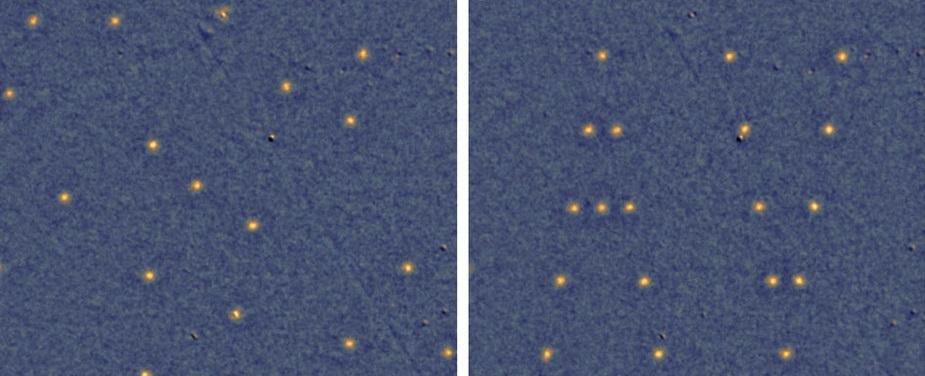11/25/2016
A nanophotonics group lead by Prof. Brahim Lounis of the University of Bordeaux and including scientists from MIPT has performed a unique experiment involving the optical manipulation of individual Abrikosov vortices in a superconductor. In their article published in Nature Communications, the scientists mention the possibility of designing new logic units based on quantum principles for use in supercomputers.
The phenomenon of superconductivity, or zero electrical resistance, occurs in certain materials in the temperature range from −273 to −70 degrees Celsius. When a material transitions into the superconducting state, the magnetic flux fields are expelled from its volume. A superconductor either has all magnetic field lines ejected from its interior or allows partial penetration of the magnetic field.
The phenomenon of partial penetration was explained in 1957 by Alexei Abrikosov, for which he was awarded the 2003 Nobel Prize in Physics. A material that does not exhibit complete magnetic field expulsion is referred to as a type-II superconductor. Abrikosov also demonstrated that these superconductors can only be penetrated by discrete magnetic flux units: one magnetic flux quantum at a time. As the field within a superconductor grows stronger, this gives rise to the cylindrical current loops known as Abrikosov vortices.
“Type-II superconductors are used everywhere: from medicine to energetics and other industries. Their properties are determined by the ‘vortex matter,’ which makes research into vortices and finding ways to manipulate them very important for modern physics,” says Ivan Veshchunov, one of the authors of the study and a researcher at the Laboratory of Topological Quantum Phenomena in Superconducting Systems at MIPT.
To manipulate Abrikosov vortices, the scientists used a focused laser beam. This kind of optical vortex control is made possible by the tendency of the vortices to be attracted toward the higher-temperature regions in a superconductor (in this case, a niobium film cooled to −268 degrees Celsius). The necessary hotspots can be created by heating the material with a laser. However, it is crucial to set the right laser power, as overheating the material destroys its superconducting properties.
Because the vortices act as magnetic flux quanta, they can be used to shape the overall magnetic flux profile, enabling physicists to perform various experiments with superconductors. While a triangular vortex lattice occurs naturally in certain magnetic fields, other types of lattices (and devices like vortex lenses) can be created by moving vortices around.
According to the authors of the study, their proposed method of vortex manipulation could be used in quantum computation to open up an entirely new field of research devoted to the development of optically controlled rapid single flux quantum (RSFQ) logic elements. This technology is seen as the most promising in terms of the design of superfast memory for quantum computers. RSFQ-based logic elements are already used in digital-to-analog and analog-to-digital converters, high-precision magnetometers, and memory cells. A number of prototype computers based on this technology have been developed including the FLUX-1 designed by a team of US engineers. However, the RSFQ logic elements in these computers are mostly controlled by electrical impulses. Optically controlled logic is one of the emerging trends in superconducting systems.
The experiments performed by the scientists serve as a proof of concept for an approach that could be used in future research into Abrikosov vortices. Physicists have yet to investigate the details of how increased temperature acts to “unpin” the vortices from their sites and bring them into motion. More research into vortex dynamics in Abrikosov lattices is likely to follow. This line of research is critical for our understanding of the physics of superconductors, as well as assessing the prospects for fundamentally new types of microelectronics components.















